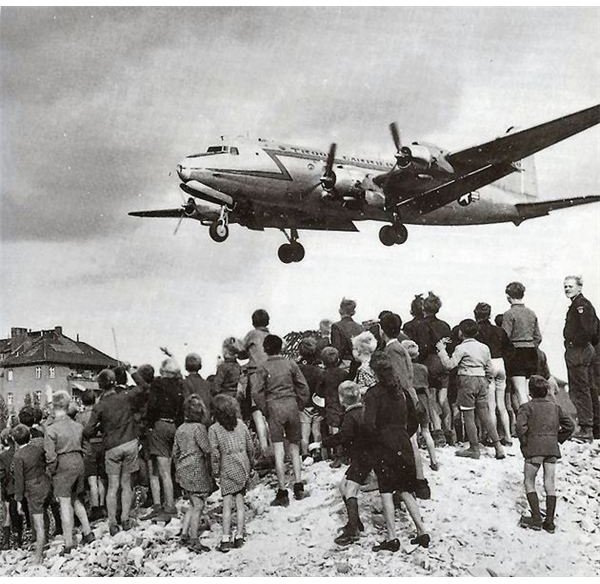What Caused the Berlin Airlift? The Yalta Conference Leads to the Postdam Agreement
The Potsdam Agreement
Learning what caused the Berlin airlift requires a thorough understanding of the history surrounding the even. At the end of World War II, both the Soviet Union and Allied forces found themselves occupying Germany. With the fate of Europe hanging in the balance, the Soviet, French, British and American governments passed the Potsdam Agreement and divided Germany into four distinct zones of occupation, each manned by that nation’s armies. In addition to the national division, the city of Berlin was also divided into four sectors. The problem with this, was the fact that Berlin was located 100 miles (roughly 160 km) within the Soviet zone.
Morgenthau Plan vs. Marshall Plan
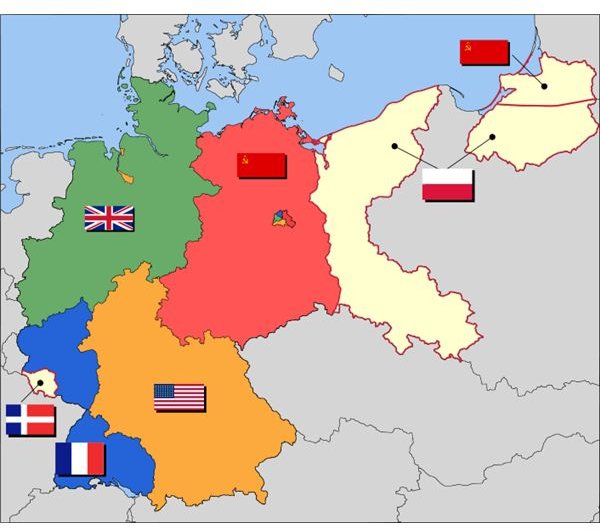
The Yalta Conference, held in February 1945, also laid out the framework for the postwar economy. Known as the Morgenthau Plan, it proposed that German industry would be essential mothballed, preventing the chances for another military buildup. Both the Soviet Union and France, the main victims of German aggression, were supportive. The United States and United Kingdom were not, however. This would leave the economy at nearly 50 percent of its possible worth – a factor that could potentially limit the rebuilding of the continent over the next decades. This came into direct odds against the American Marshall Plan, which pledged $13 billion USD to rebuild the continent.
Political Future of Germany
Almost immediately after the guns stopped firing, the East and the West found themselves at odds about the political future of Germany as well. The Soviet zone was set up with a government supported by the Communist Party of Germany. Meanwhile, the Western powers agreed to set up a democratic form of government. This was to be the focal point for a larger question regarding the fate of Europe. Despite the fact that they were allies during World War II, the Soviets and the West were now at odds politically and economically in regards to how the future should unfold. As one Soviet Party member stated, “What happens to Berlin, happens to Germany; what happens to Germany, happens to Europe.”
The Little Lift
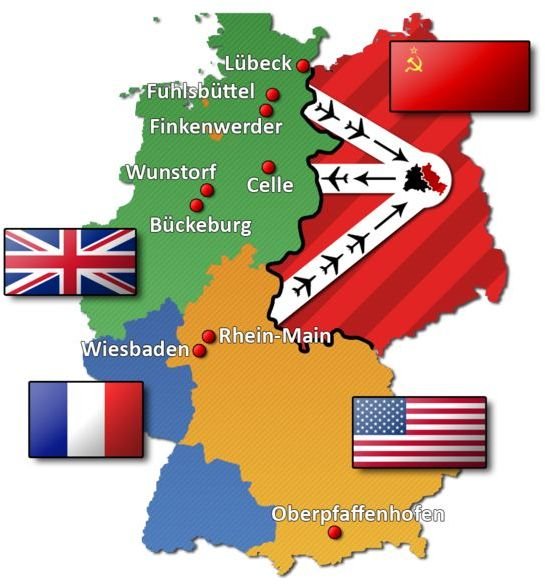
Access to the east was also soon blocked by the Soviet Union. The main agricultural centers of the nation were located in the Soviet zone, while the British, French and American zones held most of the industrial centers. Soon, the Soviets limited access to Berlin via the rails and forced the Western powers to use three air access routes. Imports to the western sections of Berlin and Germany were soon cut and the areas needed to rely on airlifts to get goods, particularly food supplies.
In 1948, the situation came to a head. The American commander in the region ordered transportation of supplies to the Berlin via an airlift. The operation was dubbed the “Little Lift.” In response to a public outcry, the Soviets eased their restrictions on train travel. However, following a collision of a Soviet Yakovlev Yak-3 fighter and a British Vickers Viking 1B airliner, killing both crafts compliment, tensions again rose. As a result, all American communication equipment in the east was ordered out, causing the airlift planes to lack proper signals for their missions.
Deautsch mark or the Ostmark?
The conflict regarding the future of the German economy became the central aspect of the divide. In order to stabilize the economy, the Americans introduced a new Deutsch mark, while the Soviets continued to push for recession. After the introduction of the new currency on June 18, the Soviets halted all traffic to West Berlin. Four days later, they introduced their own currency, the Ostmark. At the same time, they began to conduct military maneuvers near the city, signaling to the West that a new war could be on the horizon. This was made more serious when all communication lines via land or water were severed between the western zones and Berlin.
Berlin Becomes a Beacon of Freedom
Even without direct communication to Berlin, the Western powers plan to use the Deutsch mark took hold throughout both sides of the city. Despite this fact, West Berlin was limited to just over a month’s worth of food and coal. Essentially, the Soviets could sit back and wait for the city to run out of supplies and march in and take over against the wishes of the Americans, French and British. Since much of the Allied powers had scaled down their forces following the end of the war, there was little that could be done to prevent this fact. General Lucius Clay, commander of US forces in the region, stated, “We are convinced that our remaining in Berlin is essential to our prestige in Germany and in Europe. Whether for good or bad, it has become a symbol of the American intent.”
The Decision to Launch the Berlin Airlift
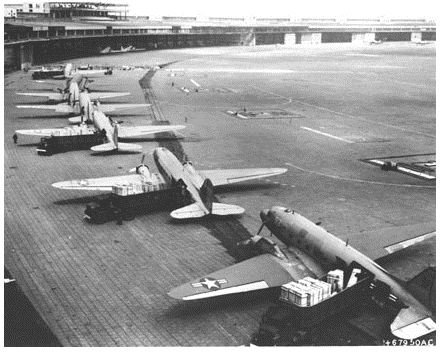
With the only course of action being the launch of a full-scale Berlin Airlift, US and British forces were limited in the scope of what could be done. The US had only two squadrons of C-47 Skytrain aircraft, while the British fleet was comparable. In total, it was estimated that they could move approximately 700 tons of supplies into Berlin each day. This was not going to be enough, however, as roughly 5,000 tons of supplies were needed. The RAF planned to move an additional 150 C-47s and 40 Avro Yorks from the United Kingdom to Germany. Eventually, the Australian military also contributed to the cause.
West Berliners Survive
The Berlin Airlift began in earnest on June 25, 1948. Over the course of the next year, the Soviets attempted the circumvent the West’s support by offering supplies themselves. For the duration of the Airlift, West Berliners declined the food and coal. Communist forces also worked from inside to overtake the municipal government, but to no avail.
The Easter Parade
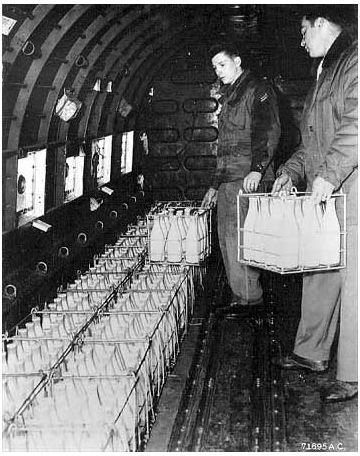
As 1949 came and the Berlin Airlift was in no sight of ending, the American government determined it needed a large-scale show of force to end the situation. On Easter Sunday, a combination of American and British planes set the record for the largest airlift in history. From noon to noon on April 15 and 16, 1,383 flights were launched, delivering 12,941 tons of coal in a single day. This became known as the “Easter Parade.” It continued after, even more efficient than before. The American and British government announced that it would hold the Berlin Airlift indefinitely. This was enough to make the Soviets withdraw from the blockade. One minute after midnight, on May 12, 1949, the standoff ended.
Outcome of the Berlin Airlift
Through the process of the Berlin Airlift, the West proved that aviation technology held the resources necessary to prevent a full Communist takeover of Germany, let alone Europe. A total of 2,326,406 tons of food and supplies were delivered to Berlin via 278,228 flights in just 15 months. At its peak, a plane was landing in Berlin airfields every 30 seconds. The distance covered by the combined fleet of aircraft was equal to flying to the Sun.
This was the first conflict in the long battle that would be the Cold War. While 101 pilots died during the transportation of goods, no shots were fired. At a cost of $224 million USD ($2.04 billion in today’s money), it set the standards for what would become a battle of political and economic differences.
References
“Berlin Blockade” American Experience: https://www.pbs.org/wgbh/amex/bomb/peopleevents/pandeAMEX49.html
“Berlin Airlift” Truman Library: https://www.trumanlibrary.org/teacher/berlin.htm
“The Berlin Airlift” Centennial of Flight: https://www.centennialofflight.gov/essay/Air_Power/berlin_airlift/AP35.htm
“The Potsdam Conference” Yale Law School: https://avalon.law.yale.edu/20th_century/decade17.asp
Image Sources
C-54 Landing. (Supplied by US Air Force; Public Domain; https://upload.wikimedia.org/wikipedia/commons/d/d8/C-54landingattemplehof.jpg)
German Map. (Supplied by 52 Pickup; Creative Commons; https://upload.wikimedia.org/wikipedia/commons/8/80/Map-Germany-1947.svg)
Berlin Air Routes. (Supplied by Leerlaufprozess; Creative Commons; https://upload.wikimedia.org/wikipedia/commons/6/67/BerlinerBlockadeLuftwege.png)[](https://commons.wikimedia.org/w/index.php?title=Benutzer:Leerlaufprozess&action=edit&redlink=1)
C-47s. (Supplied by US Air Force; Public Domain; https://upload.wikimedia.org/wikipedia/commons/b/ba/C-47s_at_Tempelhof_Airport_Berlin_1948.jpg)
Loading Milk. (Supplied by the US Government; Public Domain; https://upload.wikimedia.org/wikipedia/commons/3/3e/Berlin_Blockade_Milk.jpg)
